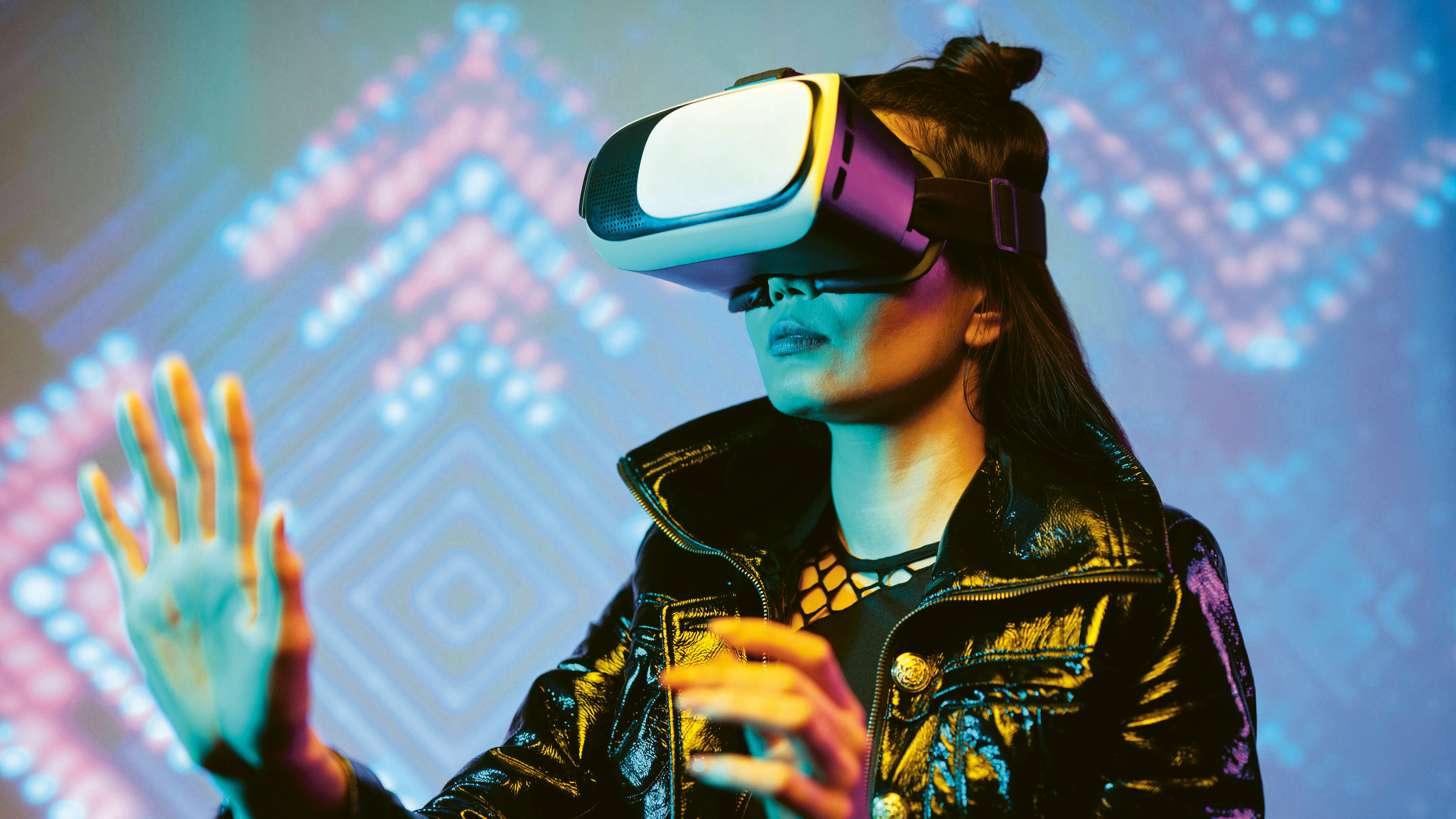Forschung
VR Shall See
Can new hand- and eye-tracking technologies boost consumer spending and transform virtual shopping behavior? Dive into our findings to unlock the potential of immersion in virtual retail and discover how to turn casual explorers into enthusiastic buyers.

Immersion—the degree to which a virabsorbing—is considered a key factor in shaping consumer engagement. Highly immersive experiences (for example, using the latest VR headsets with hand and eye tracking) can create a compelling sense of presence that traditional web or mobile channels are unable to offer. These experiences can potentially increase user engagement and foster emotional connections with products and brands. However, how such experiences influence purchase decisions is not yet fully understood. Thus, making informed decisions about the design of POS in metaverse or VR is difficult. From a managerial perspective, this raises an important question: Does enhancing immersion in a virtual store affect what and how consumers buy?
The Research Project
The purpose of the project was to explore how varying levels of immersion in VR environments influence consumer purchase behavior. An experimental setup was implemented to compare two groups of shoppers navigating a virtual supermarket. One group used standard hand-tracking VR controllers, while the other relied on advanced hand- and eye-tracking interactions, allowing intuitive product selection through gaze and gestures.
The experiment involved 54 participants (half female, average age 25) who com- pleted a realistic VR shopping task followed by a survey to assess their experiences. Both behavioral metrics (actual spending, shopping duration) and subjective measures (satisfaction, loyalty intentions) were collected. The sole difference between conditions was the interaction modality, which isolated the immersion effect on consumer decisions.

Conclusion
Overall, VR Shall See demonstrates that immersive technology isn’t just tech for tech’s sake—it has tangible effects on consumer decisions. For companies eyeing the metaverse, the message is clear: If you want to succeed in virtual retail, pay close attention to immersion. By invest- ing in more natural and engaging interaction modalities, you can elevate the shopping experience in ways that boost both immediate sales and longer-term customer affinity. As VR and augmented reality continue to evolve, understanding human behavior dynamics will be key to designing virtual environments that truly deliver value for both consumers and businesses. The virtual storefront of the future won’t just look 3D—it will feel interactive and alive, which makes all the difference in turning explorers into buyers.
KEY INSIGHTS
- The results clearly demonstrate the value of investing in immersive technologies to enhance consumer engagement and purchasing behavior in virtual retail environments. Managers can directly apply these insights to inform strategic decisions in virtual store design and customer interaction.
Immersive interaction significantly boosts spending: Participants using combined hand and eye tracking spent about 50% more (average of 416 units) than those who relied on hand-tracking only (average of 273 units). The statistically significant increase demonstrates that deeper immersion directly influences consumers to purchase more. Managers should prioritize incorporating immersive technolo- gies like hand and eye tracking to boost consumer spending.
Immersion drives subconscious, unplanned purchases: Despite similar initial spending intentions in both groups, actual spending was higher under more immersive conditions. Shoppers didn’t consciously plan to spend more, but intuitive interactions subtly encouraged additional, likely impulsive purchases. Thus, immersive designs act as powerful yet unobtrusive nudges. Retailers can strategically leverage these subtle influences to enhance sales without negatively impacting the consumer experience.
Longer shopping duration under higher immersion increases product exposure: Enhanced immersion led participants to spend approximately 20% more time (221 seconds versus 184 seconds) browsing the virtual store. Though not statistically significant, the duration difference suggests that immersive experiences may foster deeper engagement and extended exploration. If this impact of higher immersion is supported in future follow-up studies, retailers could optimize virtual environments to encourage extended browsing, maximizing product visibility and incremental sales opportunities.
Positive trend on consumer satisfaction or loyalty: Immersive interactions slightly improved customer satisfaction metrics (Net Promoter Score: 6.7 vs. 6.0; revisit intentions: 4.37 vs. 4.11 on a 5-point scale). These results indicate no adverse effects from enhanced immersion, suggesting that managers can introduce immersive elements knowing that they will likely maintain and even potentially enhance customer satisfaction and loyalty.
Seamless and intuitive interaction design enhances shopping experience: The effectiveness of immersive technology stems from removing fric- tion and enabling effortless product interaction. In the experiment, hand- and eye-tracking systems allowed shoppers to engage naturally, closely mirroring real-world shopping. Managers should focus on creating intuitive, seamless interactions to significantly enhance user satisfaction and encourage repeat visits.
Projektteam
- Dr. Fabian Buder, Head of Future & Trends Research, NIM, fabian.buder@nim.org
Kooperationspartner
- Dr. Darius-Aurel Frank, Aarhus University
Kontakt

